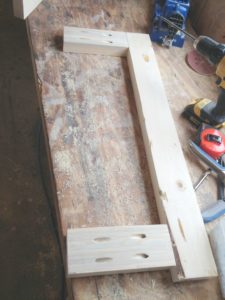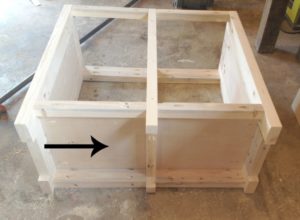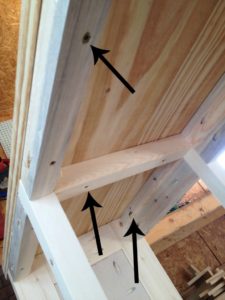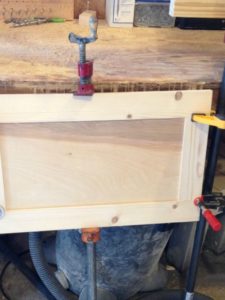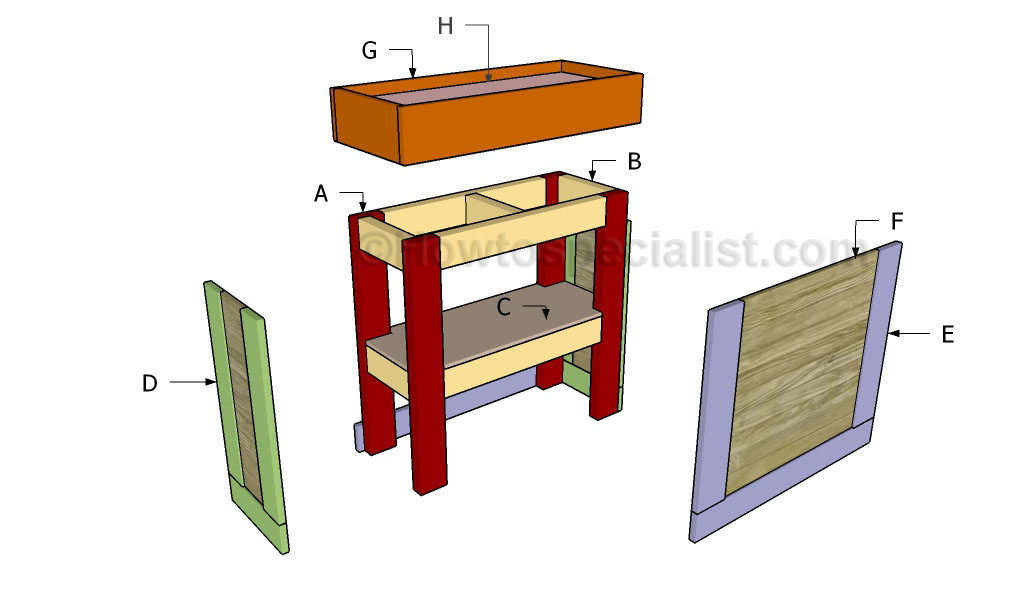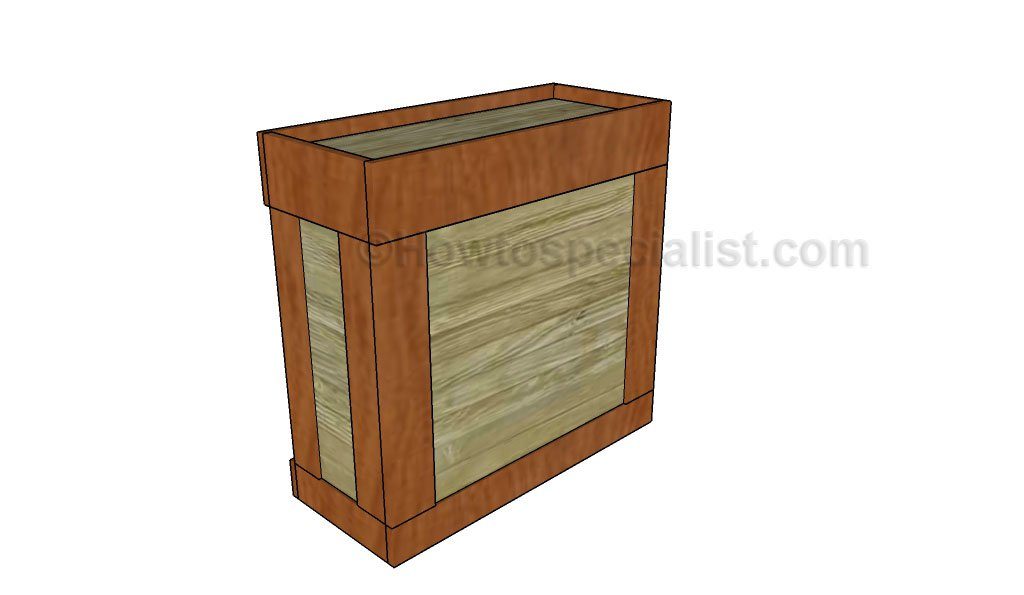Aquarium Cabinet

A sturdy cabinet that could be used for just about anything… A TV Stand, console, or in this case an aquarium.
- 3/4″ plywood (1/2 Sheet)
- 1/4″ plywood (1/4 Sheet)
- 1 – 2x10x8 Spruce
- 3 – 2x4x8 Spruce
- 2 – 2x2x8 Spruce
- 2 – 1x3x8 Spruce
- Cove moulding
- Crown moulding
- Base moulding
- 2 – sets of hinges
- 2 – knobs/ or pulls
- 2 1/2″ pocket hole screws
- 1 1/4″ pocket hole screws
- Brad nails
- Wood Glue
- Wood Putty
What makes this cabinet sturdy, is its frame made mostly of 2×4’s. This cabinet ended up being 32″ tall x 36″ wide x 16 1/2″ deep overall. If you wanted a deeper or taller, change these dimensions as you wish.
First step is to cut four 2×4’s at 30 1/2″ long and four pieces at 7″ long. Then, I assembled two sides like shown using pocket holes and screws. I attached the bottom 2×4 an inch from the bottom
Before attaching the other 2×4 in the frame, I added a piece of 3/4″ plywood to fit in the opening. It’s best to measure and cut exactly to fit, but it should be 7” wide x 22 ½” long.
 Lastly, I attached the last 2×4 to complete the two side panels attached using pocket holes and screws.
Lastly, I attached the last 2×4 to complete the two side panels attached using pocket holes and screws.
To help hold the weight in the middle, I built another frame piece from 2x2s. The two legs should be 30 1/2” long and the two “stretchers” should be 11” long. I attached the bottom stretcher 2 1/4” from the bottom. Assemble this using pocket holes and screws.
Now, it was time to attach all three of these pieces together. I cut 4 pieces of 2×4 and 4 pieces of 2×2 all at 13” long and drilled pocket holes in both ends of each piece. . I used 2×2’s in the back and 2×4’s in the front and assembled as shown.
First I attached one side panel to the middle support, then attached the other side panel to that using pocket hole screws. I attached the bottom 2×4’s in the front 1” from the bottom and the back bottom 2×2’s 3” from the bottom. (Note: this view is looking from the back.)
I cut a piece of 3/4″ plywood to fit in the bottom of the cabinet. This should be about 11” x 27 1/2”. I drilled pocket holes in both ends and screwed it in place into the two side panels. It should sit right on the bottom piece of the middle support.
I used a 2×10 to build a top for the cabinet. I made it 36” long and 16 ½” wide. You can use a circular saw or table saw to trim it down to size. Once the top was together, I screwed it in (making sure it was centered side to side) using 2 ½” screws through the back top supports, the middle top support and “toe-nailed” (drove in at an angle) through the front top 2×4.
I made the doors 14” wide and 23 ½” tall. You can see my post here.
Finally, I added crown molding around the top, base around the bottom, and cove to the insides of the side panels. (Note: I added the cove and base before the top…it doesn’t matter whether you do it before or after except for the crown molding.)
I puttied and sanded where needed then, I stained the cabinet in Minwax Golden Oak and polyed with Minwax Polycrylic. I attached the doors with simple overlay hinges and added these pulls from D Lawless Hardware to the doors to match the black hinges I used.
I didn’t add a back, because I wanted to hide the extension cord and power strip in the cabinet, but if you wanted a back, just staple or nail some 1/4” plywood on the back side.
This plan can be originally found at https://www.woodshopdiaries.com/diy-aquarium-cabinet-stand/
